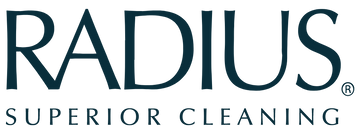Did you know that, according to this study, 61% of people are afraid of going to the dentist?
It’s understandable. There is a significant amount of discomfort that is associated with the dentist’s office. Personally, one of my biggest fears about the dentist’s office is the sound that the metal scraper makes against my teeth when the dentist is scraping off the plaque.
This is an excruciatingly long and often painful process...quite literally akin to 60 minutes of nails on a chalkboard (even if it is set to a background track of dental office soft rock jams!).
That said, plaque removal is necessary. While we’d all like to think that we are superstar brushers who get rid of plaque before it hardens into tartar, it’s difficult for most of us to reach underneath the gum line where tartar just loves to accumulate.
That’s why I was so excited with the advent of ultrasonic teeth cleaning. During an ultrasonic teeth cleaning, plaque and tartar is removed with an ultrasonic scaler which uses sonic vibrations to break apart harmful build-up. After the plaque and tartar is broken up, the ultrasonic scaler shoots water into the dental crevices to wash away debris.
I know that all sounds well and good, but you may have heard a few concerning rumors about ultrasonic teeth cleaning recently.
These rumors may include that it’s less effective than manually scaling, or that it damages your enamel, or that it’s an unnecessary expense that you can just as easily take care of at home, or that it can even potentially expose you to COVID-19.
Today, we’d like to address a few facts about ultrasonic cleaning to help address some of these common rumors:
7 FACTS ABOUT ULTRASONIC TEETH CLEANING:
1) It’s much quicker than manual scaling.
While manual scaling can take up to 2 hours (!) for cases of extreme tartar build-up, ultrasonic teeth cleaning usually only takes about 30 minutes.

2) It’s just as effective, if not more effective, than manual scaling at reducing tartar.
Research shows that ultrasonic teeth cleaning is just as effective as manual scaling at removing plaque and tartar.
Most notably, ultrasonic scalers have three attributes which potentially make them better at breaking up that nasty dental gook:
- Ultrasonic scalers feature a very small tip, which allows them to penetrate deeper into dental pockets than traditional manual scalers;
- The water sprayed by the ultrasonic scalers post-vibration helps to dislodge accumulated plaque and tartar;
- Ultrasonic scaling vibrations actually creates oxygen bubbles in deep dental pockets, which helps to kill off harmful bacteria growing there and ultimately prevent gum disease.
3) It can remove the appearance of stains.
Yellowing and stains are caused, in part, by plaque build-up. Therefore, it makes sense that ultrasonic teeth cleaning would make your teeth more pearly.
However, whether it makes them more white than traditional scaling is up for debate. Theoretically, both should help reduce the appearance of stains if done thoroughly.
4) It’s less painful than manual scaling.
Traditional manual scaling requires the dentist to apply a substantial amount of pressure to the tooth, often causing discomfort and even outright pain.
If your dentist is inexperienced, you also run a greater risk of the metal scaler puncturing or damaging the gum line. Ultrasonic teeth cleaning uses vibrations and water so it is a more gentle, less invasive clean.
5) It actually causes less enamel damage than manual scaling.
Considering the above point about greater pressure on the teeth and potential dentist user error with manual scaling, it’s no surprise that ultrasonic scalers have been shown to be less damaging to enamel.
If you have sensitive teeth or weakened enamel, we absolutely recommend ultrasonic cleaning over manual scaling.
6) While at-home ultrasonic scalers are available, the ADA does not recommend them….with good reason.
There has been a rise in recent years of ultrasonic scalers available through a simple click of a button, but users should be wary that improper use of these tools can potentially lead to gum damage, gum recession, and infection.
Consider this: dental hygienists must go through extensive training over years to properly use these tools….chances are you won’t learn how to do it properly in 20 minutes.
A better option? Take good care of your teeth at home with a toothbrush that gets both your teeth and gums ….and see your dentist twice a year.

7) While it is largely safe, there are some health risks…. Particularly to your dentist… Especially right now.
Some of the reported health risks include cell disruption, platelet damage, interruption to pacemakers, temporary tinnitus, and auditory damage to long-term clinicians.
However, the most concerning health risk of ultrasonic teeth cleaning is that the water released during the procedure mixes with the patient’s oral bacteria and creates aerosols released during the procedure.
These aerosols can be ingested by the dentist and put their health at risk. It was found in a 2016 study that aerosols containing high numbers of the dangerous Staphylococcus and Streptococcus species were found after ultrasonic cleaning sessions.
After a year like 2020 in particular, it is no surprise therefore that the American Dental Association (ADA) actually recommends hand scaling instead of ultrasonic scaling during the pandemic for this very reason. You can read all about it here.
As a conscientious company who cares both about dentists and their patients and trusts in the expertise of the ADA, we highly recommend hand scaling above ultrasonic scaling until a vaccine is widely available.
We hope this has given you a little more clarity on ultrasonic teeth cleaning. Now go forth and smile bright, friends!

